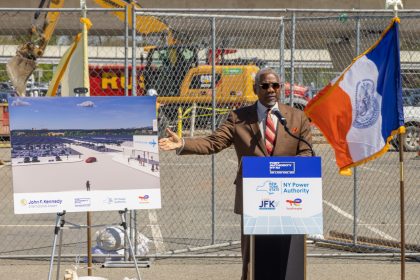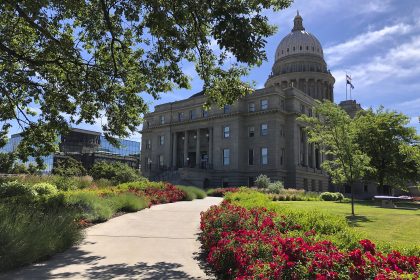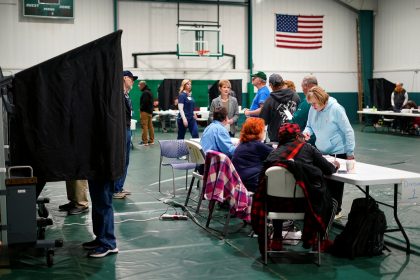Census Data Shows America Growing More Diverse, DC Whiter

Data released by the U.S. Census Bureau to jump start the redistricting process across the country reveal an America that’s grown more diverse over the past decade.
The largest demographic increases came in the number of people who identified themselves as Hispanic, Asian or a blend of races.
The non-Hispanic White population declined by 2.6% since 2010, agency officials said during a lengthy afternoon news conference.
Meanwhile, the Asian population grew 35%; the Hispanic population, 23%; and the Black population, 5.6%.
“These changes reveal that the U.S. population is much more multiracial, and more racially and ethnically diverse, than what we measured in the past,” said Nicholas Jones, the director of Race, Ethnicity, Research and Outreach for the Census Bureau’s Population Division.
People who identified as non-Hispanic White made up 69% of the population in 2000. On Thursday, the Census Bureau reported that share stands at 58%.
Across the country, 36% of adults are non-White, up from 25% a decade ago. Children are now 47% non-White, up from 35% in 2010.
Next Up, Fights Over Redistricting
In addition to who we are, the numbers also reveal where we as Americans are living — information critical to the state legislatures and independent commissions tasked with redrawing election districts based on population changes.
“These data play an important role in our democracy and also begin to illuminate how the local and demographic makeup of our nation has changed over the last decade,” said Ron Jarmin, acting director of the bureau.
In April, the agency released preliminary data that shows at least one long-running and politically potent trend has continued, with the South and the West gaining population — and the congressional representation that comes with it — at the expense of the Northeast and the Midwest.
As a result Texas will gain two seats and Florida one in the current redistricting, while New York and Ohio will each lose one.
California, a traditional growth leader that ordinarily gains a seat with each census, will lose one this year, a first.
Now that the census data is out, what will follow is a rushed, and politically volatile process in which all eyes will be turned to perceived battleground states, and lawsuits will be almost inevitable.
For instance, with Republicans in control of 30 state legislatures, and Democrats, 8, redistricting could flip control of the House in 2022 without a single voter switching sides.
This is particularly true given that two of the GOP-controlled states, Florida and Texas, are gaining seats in Congress.
Each state’s process and who controls it will look different. Some states, such as New York, Indiana, and South Carolina, have already begun holding public redistricting hearings to discuss how lines will be drawn, take voter feedback and assess any issues that the delay in data might pose.
Some redistricting commissions, such as in Idaho and New Jersey, are still appointing their final members who will decide the new maps. Democrats in some states have already sued to ask courts to intervene to ensure fair maps in states where a legislative consensus is unlikely to be reached.
America’s Fastest Growing Community: A Retirement Mecca in Florida
The top five largest cities in the country are now New York, Los Angeles, Chicago, Houston and Phoenix. Philadelphia is now the sixth largest city, bumped from fifth by Phoenix, which was the fastest growing of the top 20 largest cities. Its population rose by 9.4%.
The Villages, a retirement community in Florida, is the fastest growing metro area in the country.
McKenzie County, N.D., was the fastest growing county over the past decade, growing by more than 100%.
Speaking of counties, population growth was most pronounced in larger counties over the past decade; small counties as a group lost population, officials said. In all, 52% of counties across the nation lost population.
Overall, the nation’s population growth slowed dramatically over the past decade — up by just 7.4% compared to the previous decade, the slowest rate in nearly a century.
The overall decline in the White population was the first measured in U.S. history. But there was a notable outlier — the nation’s capital, where the White population grew from 34.8% in 2010 to 38% in 2020.
Despite this, the population of the District of Columbia remains 50% Black and 11.3% Hispanic and Latino.
The two states losing the largest share of White residents were Washington State, which was 72.5% White in 2010, but only 63.8% in 2020, and Massachusetts, which went from 76.1% White in 2010 to 67.6% White in 2020.
All 50 states in the U.S. saw the White share of their populations decrease.
Why Was The Data Late?
The barriers the Census Bureau faced in their data collection efforts in 2020 were unprecedented.
The pandemic, of course, made door-to-door canvassing difficult and slow. But then there were also the efforts by the Trump administration to have a citizenship question included on the questionnaire and proposing that undocumented immigrants not be counted.
Then, Trump tried to cut the data collection short, so he could personally cherry pick who was included in the final count and who was not. The resultant legal wrangling extended the process further still.
In the end, the release of the census data was delayed by over four months.






















